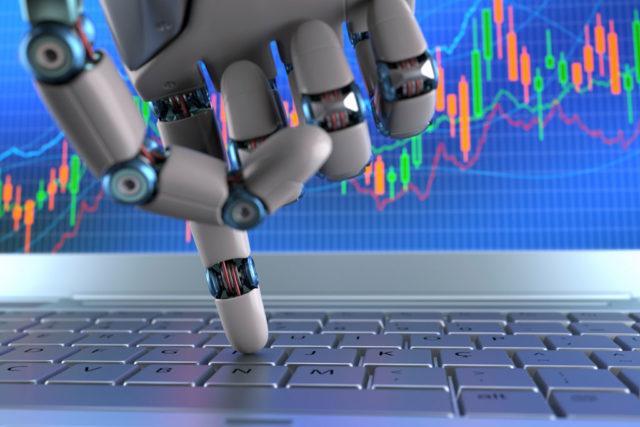Amid the implementation of 5G in Brazil, experts consider digital transformation an urgent and necessary ecosystem in the country. The movement highlights the euphoria of various sectors of the economy by emphasizing the benefits of the fifth generation of mobile internet network, which are not limited to faster smartphones and lower latency, but also make it possible to connect factories, hospitals, vehicles and industrial processes.
To CNN Brasil Business Siemens’ CEO in Brazil, Pablo Fava, gave an exclusive interview in which he addressed the country’s moment in relation to automation and digitalization of the industry, the potential of 5G with the Internet of Things and the possibilities of developing industrial processes and infrastructure with the use of new technologies.
For him, 5G has the potential to transform the industry in Brazil, with more efficient, flexible production systems that actually improve people’s lives through the infrastructure it makes available. However, the executive believes that the adoption of a digital transformation will not be immediate, with the need to implement new technologies that guarantee real benefits to people, based on projects based on in-depth studies.
Check out Pablo Fava’s interview with CNN Brasil Business:
Question: How far is Brazil in terms of automation and digitalization in the industry?
Reply : We have made a lot of progress in Brazil. We tend to think that Brazil is far behind other countries, but that’s not quite the case. The problem is that these advances do not happen homogeneously. We have several sectors such as agribusiness, the paper sector, food, aeronautics with Embraer, energy – these cases are highlights and manage to be very competitive even in the international scenario. The big question is that our country is much bigger and very diverse, so it is essential that other sectors arise, through the intensive use of technology, so that they can add value and generate more jobs. I’m not Brazilian, I was born in Argentina, and I can say that everyone has always seen Brazil with a very strong industrial vocation.
Question: And what challenges does Brazil need to overcome to advance further in the industrial sectors?
Reply : Modernizing and expanding infrastructure in general, but mainly ports, airports, means of transport – this is a challenge in Brazil. Basic sanitation is also, of course, a big challenge. And also having more qualified labor, because education is the basis of everything. We at Siemens think that we should start there, thinking about how we can transform the potential of young people, raise their level of technological competence. The good part is that scanning features are becoming more accessible.
Question: Do you think Brazil is prepared to encompass all the technologies that are being implemented, such as 5G?
Reply : Due to the characteristic of 5G, it does not come to answer a question for me or for someone else, such as: “Now are we going to have a faster answer on the cell phone?”. 5G has low latency, a large amount of information and the ability to connect millions of devices per km². It is evident that it is not aimed at people who use smartphones or smartwatches, it is aimed at the Internet of Things. That’s what 5G brings, enormous potential to transform critical industries and infrastructures that improve people’s lives and in which you reconfigure industrial operations. When we think of a factory, production lines come to mind, ways of producing since Henry Ford. We’ve always thought of fixed infrastructure and a product that you add value by moving through the process. Now, with 5G, we can have a more efficient, productive, flexible future, with a factory that can move itself around the product being produced. Like autonomous robots in a production, for example. These are questions that, before 5G existed, we could not think of asking this type of questioning.
Question: How do you see the transformation potential of 5G in Brazil?
Reply: Here in Brazil, we are at the forefront of industrial 5G. But adoption takes longer, naturally. There are some points that still need further analysis, to find a defined purpose. We need to think if we are going to implement a new technology just by adopting something new or if we are going to look for some efficiency gain in new business models. So, we need a deeper study about investments, earnings, projects. There is a study by Deloitte that shows that there is a lot of awareness in Brazilian industries about the strategic importance of 5G. This is a first conclusion, and this awareness is superior worldwide. The second conclusion is that when you go to an industry, the system wireless current seems to satisfy the user. Because? Because it was built for the kind of functionality he’s applying today. Therefore, there will likely have to be a thought of disruption to generate a faster implementation of 5G.
Question: And what are these points that still need to be studied? What is the biggest challenge in this digital transformation?
Reply: An important issue is data security. Not only of their integrity, so that they are not violated, but also so that they are not known to anyone. It is important that they are confined, sometimes in proprietary networks, because they end up being data that can be critical, whether for energy distribution or the automotive industry. If this data somehow becomes available, an industry may think that someone can calculate its production capacity, know the bottlenecks and problems it has. That’s why there is this discussion about how much of this infrastructure the industry intends to own and how much to be the operator. Or if it will be all in the hands of the industry or all in the hands of the operators. Cybersecurity is the biggest challenge within this 5G transformation.
Question: 4G has not arrived in many places in Brazil. What changes in relation to 5G? Was it thought to have better scalability over its predecessor? To reach more people?
Reply: This is part of the way 5G was thought of. The most classic way to explain is citing the example of agribusiness. 4G on a farm certainly doesn’t exist, and most likely never will. First, because no one is going to invest where there is no income, and second, because it was not so easy in 4G to hire an area of the network, asking “please, I need to hire a frequency for my agricultural machines”. It was more complex, and this was discussed a lot with Anatel. In the model we have today, the farm can hire its area for a prime frequency, 3.6 Ghz, so that it can be its own investor because it knows it will generate value. This is perhaps the biggest takeaway. At an airport it’s the same thing. At Santos Dumont Airport, for example, which needs 5G to have connectivity. Who will be the operator that will provide this firm 5G? Today, the airport has the possibility of contracting this prime frequency band, which can be contracted by a private agent, by the user himself, and not only by the operator. This resolves the issue of security for this data, because it is confined to its own infrastructure.
Answer: And what are the main industry sectors in Brazil that you see as being more prepared and with more potential to receive 5G?
Reply: It’s not just in industry, it’s very strong in infrastructure as well. There are new portfolios that enter the junction of this digitalization. One of them is what Siemens has launched, Building X, in the area of smart building, to scale, open and seamlessly integrate this building system to eliminate this complexity and enable zero emissions. The types of industry in particular, I would say those that are a little more advanced, because their production already needs to implement many technological processes. Anyway, I believe it’s part of an evolution. Small and medium-sized companies already do, when designing a machine, like a bottler for a brewery, for example, they already design the machine in virtual molds, create the codes to control the machine in a virtual way, simulate how it would behave and sell with a digital twin of hers. Once they produce the machine and take it to the field, the costs caused by the production time are reduced, because the robot will already have all the user information, the digital twin already has all the necessary production knowledge. It already exists. So, I would say it depends a little on how much the user will be demanding from the end customer or how disruptive the industry in question will be.
Question: With all these processes going on, how can this be reconciled with an energy transition? Where does energy efficiency fit into all this?
Reply: That’s an excellent question. Energy will increasingly be diversified and generated in distant areas. You will no longer have a large generator, it will be decentralized energy. The point is that we manage to generate sustainability by using cleaner forms of energy, such as solar energy, wind energy, storing energy with hydrogen, biomass and so on. This decentralization and new entrants in a fully integrated network generates a very big challenge in terms of how to manage this energy, but with an even greater challenge: electromobility. Why will she be such a challenge? Because it will consume a lot of energy. Just imagine if tomorrow we have a lot of electric cars, trucks, buses. Imagine the yard of a carrier’s vehicles if they were all electric, the capacity of substations it has to have to power these batteries at night. Or our cars consuming energy at home, but at work, with a full battery, I can sell energy at a peak time when I get back from work. There is no way to organize this if it is not through intelligent digital processes, this is very evident. The challenges are enormous, and digitization is the only answer I know of to address this challenge.
Question: Finally, how will Siemens act in the medium and long term, especially in Brazil?
Reply: Siemens is 175 years old, the first project in Brazil is already 155 years old. The vocation has always been to respond to the challenges of each generation, so the company is always changing. We work with digital transformation for industries, infrastructure and mobility. The biggest challenge is to reinvent yourself. How to constantly reinvent yourself? We have four strategic pillars that support any action the company will take: the customer is always in focus; empowered people; growth mindset; and technology with purpose. The last three that I talked about have a specific focus on innovation, and that’s what we treat as a challenge, to innovate and reinvent yourself. Another challenge that applies to the whole world, but here in Brazil especially, is to find talented people, bring people with potential to Siemens and develop talent together. This is the great challenge of our generation. Good people are easy to lose, everyone wants them, but we want to develop talent at home. This is our mission, and that’s why we hire between 65 and 80 young people, around 160 a year, to develop them for the future.
Source: CNN Brasil
Joe Jameson, a technology journalist with over 2 years of experience, writes for top online news websites. Specializing in the field of technology, Joe provides insights into the latest advancements in the industry. Currently, he contributes to covering the world stock market.






